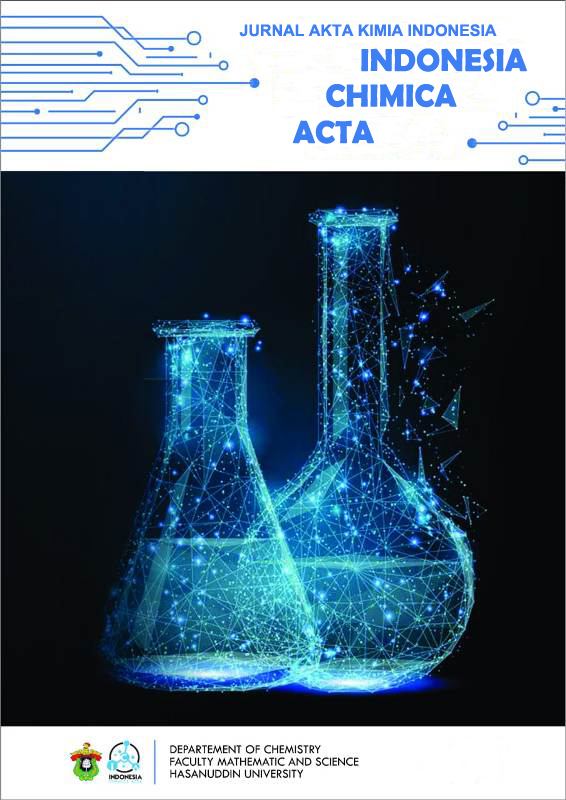THE DETERMINATION OF PARABEN PRESERVATIVES IN BODY SCRUB
DOI:
https://doi.org/10.20956/ica.v10i1.6407Keywords:
Paraben, Body Scrub, KLT, Spektrophotometer UV-VisAbstract
Esther alkyl of p-hidroksibenzoat (paraben) widely used as an agent antimikroba with activity antimikroba increase in line with the length of the chain alkyl. The compound is widely used as a preservative on scrubs to extend the savings products. Scrubs is one care products the body much used to lift sel-sel dead skin can replace the soap. Although beneficial as a preservative , research liaise paraben with some side effects adverse as cancer, infertility and miscarriage. The identification of the two kinds of paraben (metyl paraben and propyl paraben) of 10 sample wraps done with thin layer chromatography (TLC) who proceed to the analysis of the levels of parabens using spectrophotometer UV-Vis. The results showed that of the 10 samples there are 8 samples positive methyl paraben with average levels of value of 0.05% and 7 samples positive with propyl paraben are common values of average levels of 0.03%. The average total of paraben in sample 8 body scrub that is amounted to 0.08%. Comparison paraben shows that methyl paraben having concentration higher in any product.
References
Darbre PD, Aljarrah A, Miller WR, Coldham NG, Sauer MJ, Pope GS. 2004. Concentrations of parabens in human breast tumours. J Appl Toxicol. 24(1):5-13.
Elder RL. 1984. Final report on the safety assessment of methylparaben, ethylparaben, propylparaben and butylparaben. J. Ame. Coll. Toxicol. 3: 147–209.
Miller, WR. 1996. Estrogen and Breast Cancer. Chapman and Hall. London.
Barr, L, Metaxas G, Harbach CAJ, Savoy LA, Darbre PD. 2011. Measurement of paraben concentrations in human breast tissue at serial locations across the breast from axilla to sternum. J. Appl. Toxicol.
Cowan-Ellsberry, CE, Robison SH. 2009. Refining aggregate exposure: example using parabens. Regul Toxicol Pharmacol; 55(3):321-9.
Scientific Committee on Consumer Safety (SCCS). 2011. Clarification on Opinion SCCS/1348/10 in the light of the Danish clause of safeguard banning the use of parabens in cosmetic products intended for children under three years of age. Brussels, Belgium: The European Commission (EC). Report No.: 1446.
Downloads
Published
Issue
Section
License
This is an open access journal which means that all contents is freely available without charge to the user or his/her institution. Users are allowed to read, download, copy, distribute, print, search, or link to the full texts of the articles in this journal without asking prior permission from the publisher or the author.
Jurnal Akta Kimia Indonesia (Indonesia Chimica Acta) operates a CC BY-SA 4.0 © license for journal papers. Copyright remains with the author, but Jurnal Akta Kimia Indonesia (Indonesia Chimica Acta) is licensed to publish the paper, and the author agrees to make the article available with the CC BY-SA 4.0 license. Reproduction as another journal article in whole or in part would be plagiarism. Jurnal Akta Kimia Indonesia (Indonesia Chimica Acta) reserves all rights except those granted in this copyright notice.



